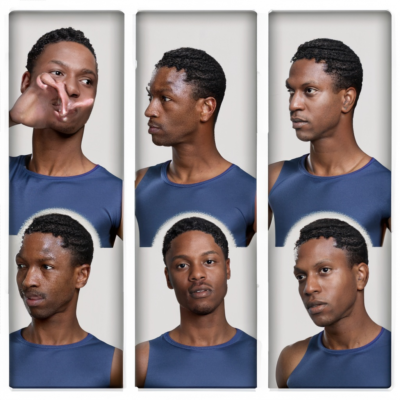Learning body language is a skill that takes time and practice to develop. However, even a basic understanding of body language can be helpful when t
Learning body language is a skill that takes time and practice to develop. However, even a basic understanding of body language can be helpful when traveling to new places.
Learning about body language and non-verbal communication can be beneficial for residents in tourist destinations for several reasons:
- Effective Communication: Non-verbal cues, such as facial expressions, gestures, and posture, play a significant role in communication. Understanding the body language of tourists can help residents interpret their needs, preferences, and emotions more accurately, leading to better communication and service provision.
- Cultural Sensitivity: Different cultures have distinct non-verbal communication norms and gestures. Learning about body language can help residents avoid misunderstandings or unintentional offenses when interacting with tourists from diverse cultural backgrounds. It promotes cultural sensitivity and respect.
- Enhancing Hospitality: Residents who can interpret and respond to tourists’ body language effectively are better equipped to provide a welcoming and accommodating environment. Non-verbal cues can convey valuable information about tourists’ comfort levels, satisfaction, or dissatisfaction, allowing residents to address their needs promptly and create a positive experience.
- Improving Safety and Security: Body language can sometimes indicate a person’s intentions or mood. Being aware of tourists’ non-verbal cues can help residents identify signs of distress, confusion, or potential security concerns. This awareness enables prompt assistance or intervention when necessary, contributing to the safety and well-being of both tourists and residents.
Some more reasons for learning body language for residents in your tourist directions before traveling.
- Building Rapport: Non-verbal cues are essential for building rapport and establishing a connection with others. Residents who understand and respond appropriately to tourists’ body language can create a more friendly and engaging atmosphere, fostering positive interactions and enhancing the overall tourist experience.
- Non-Verbal Assistance: In situations where language barriers exist, non-verbal communication becomes even more crucial. Residents who are proficient in reading body language can use gestures, facial expressions, or visual cues to convey information, directions, or assistance, bridging the communication gap effectively.
- Professionalism and Competence: Developing knowledge of body language demonstrates professionalism and competence among residents working in the tourism industry. It reflects a commitment to providing high-quality service and shows that residents value effective communication and understanding of their visitors’ needs.

Learning body language for residents in your tourist directions is a necessity before traveling can help you to:
- Communicate more effectively. Even if you don’t speak the language of the country you’re visiting, body language can help you to communicate your needs and wants. For example, if you’re lost, you can use body language to ask for directions.
- Avoid misunderstandings. Different cultures have different body language norms, so it’s important to be aware of the body language customs of the country you’re visiting. This can help you to avoid making any cultural faux pas.
- Build rapport. Body language can be used to build rapport and connect with people from different cultures. For example, making eye contact and smiling are considered to be friendly gestures in most cultures.
- Stay safe. Body language can also be used to stay safe in new and unfamiliar places. For example, being aware of your surroundings and avoiding eye contact with strangers can help to reduce the risk of being targeted by criminals.
Here are some tips for learning body language:
- Pay attention to your own body language. Be aware of your own body language and the messages you’re sending. For example, if you’re feeling nervous, you may fidget or avoid eye contact.
- Observe others. Pay attention to the body language of the people around you. What are their facial expressions, gestures, and posture telling you?
- Read books and articles about body language. There are many books and articles available on body language. These can teach you about the different types of body language and the messages they convey.
- Take a body language class. There are many body language classes available online and in person. These classes can teach you how to read and interpret body language.
Overall, learning about body language equips residents in tourist destinations with valuable skills to enhance communication, cultural understanding, safety, and the overall tourist experience. It allows for more meaningful interactions and helps create a welcoming environment for visitors from different cultural backgrounds.
Thanks for reading.
For more different topics visite the next linls
AVIF and WebP: The Future of Image Formats
The Weird and Wonderful Rituals of Phuket-Thailand
Alexandria-Egypt: A City of History and Beauty
Non-Verbal Communication: A Cross-Cultural Guide


COMMENTS